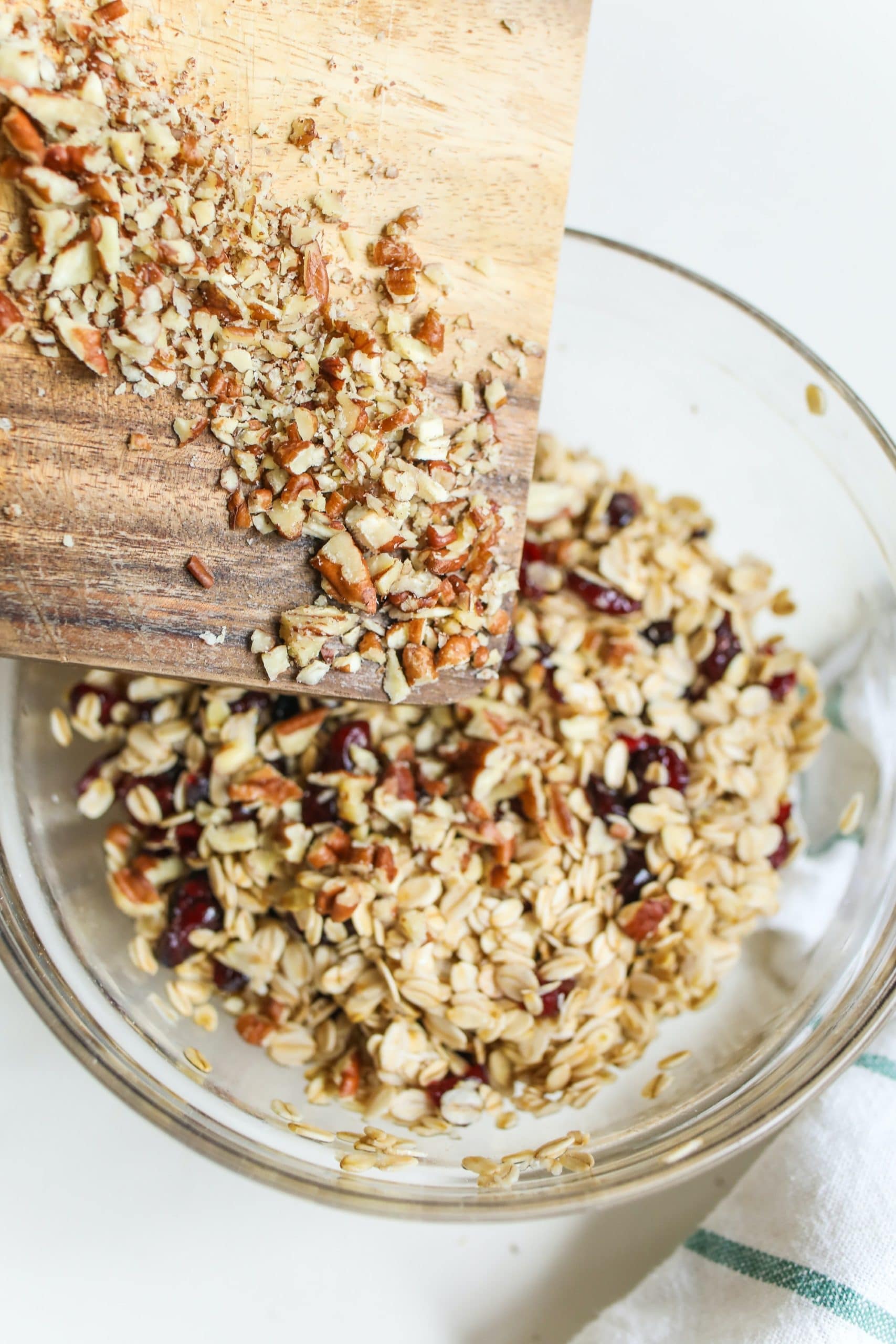Phytic acid is found in many popular foods, including oats and nuts. It’s considered an anti-nutrient, but that doesn’t necessarily mean it’s all bad.
Antinutrients
Antinutritional factors (ANFs) reduce the availability of other nutrients in the body when consumed in food or water. Phytic acid impairs the absorption of iron, zinc and calcium and therefore can cause mineral deficiencies.
What is Phytic Acid?
Phytic acid, also called phytate, is a compound found in plant seeds that stores phosphorus. Due to its antioxidant properties, it’s commonly used as a preservative. Foods that are known to contain high levels of phytic acid include the following:
- Almonds
- Beans
- Brazil nuts
- Corn
- Hazelnuts
- Lentils
- Oats
- Peanuts
- Peas
- Quinoa
- Rice
- Rice bran
- Sesame seeds
- Soybeans
- Tofu
- Walnuts
- Wheat
- Wheat bran
- Wheat germ
How to Neutralize Phytic Acid
The easiest way to ensure the phytic acid levels in your food aren’t too high is to cook it first! You can also soak, sprout or ferment them to promote phytate breakdown.
There are more benefits to cooking and prepping your food with these methods, like increasing the amounts of readily available vitamins and minerals. For example, sprouted lentils deliver significantly more B and C vitamins than unsprouted lentils, plus they have a new, interesting flavor and texture!
Lectins
Lectins are another type of antinutrient that are found in the highest concentrations in seeds, legumes and grains. They can cause digestive problems and issues with the absorption of calcium, iron, phosphorus, and zinc in the bloodstream. Despite this, the amount of lectins one would have to consume to cause these problems is far above the average person’s daily consumption, and the vegetables that this compound is found in have a lot of benefits that far outweigh any adverse effects of trace amounts of lectins.
Should You Avoid Phytic Acid-Rich Foods?
Similarly to lectins, the amount of phytic acid-rich foods a person would have to consume to reach a dangerously high level of the antinutrient is far greater than the average daily intake. Plus, the nutritional value and benefits of the foods that also happen to contain a little bit of phytic acid make the risk negligible. Nuts, beans and whole grains have been shown to reduce the risk of heart disease, stroke, and type 2 diabetes. Healthy fats improve cholesterol, prevent arrhythmias, reduce blood clotting, relax blood vessels, control glucose levels, lower insulin levels AND help us feel full for longer periods of time. So eat up!
Try meals like Almond-Crusted Salmon, Bison Quinoa Bowl, and Three Sisters Chili for a healthy serving of muscle-building protein, energizing carbohydrates and healthy fats!





Leave a Reply
No Comments